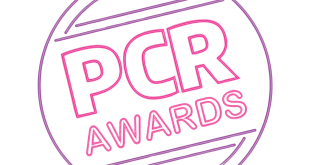Last month, industry body ICANN heralded big changes for 2023 and beyond as it set out its plans to move forward with the implementation of the next phase of new generic top-level domains (gTLDs). Here, Glenn Hayward, CEO at Com Laude discusses how brands can capitalise on domain name changes.
Businesses and organisations have been waiting a long time for the moment when they can have the opportunity to acquire their own dedicated dotbrand namespace, but while it’s promising to see this momentum, ICANN is launching into an environment where businesses are budget-constrained.
Indicative application fees at this early stage exceed $200,000 – a significant investment for businesses – although this fee may come down once the implementation plans are finalised. Given this, organisations will need to start working on feasibility studies and business plans, mapping out potential use case scenarios, ROI and securing internal stakeholder buy in. In a world where digitalisation is the new competitive landscape, dotbrand projects like this may well be prioritised.
gTLDs over time
It has been ten years since the first gTLDs were introduced. The application round was launched by ICANN on 12 January 2012 which saw nearly 2,000 applications for around 1,400 unique terms. Five hundred dotbrands were approved – such as .google, .microsoft and .sony – with hundreds of corporates snapping up their own branded slice of the internet.
Now, with this latest domain landscape evolution, even more companies will be able to secure a highly coveted dotbrand domain. But there are significant amounts of legacy issues that ICANN will need to iron out ahead of authorising the start of the next round of applications. For instance, should a confectionary producer be allowed to own a whole sector slice as .chocolate? Or a utility company own .electricity? In addition, the application process is costly, so how can they encourage underprivileged, or even bootstrapped start-up applicants to apply? With emerging competition from blockchain domain providers that provide an alternative naming system to the DNS, the latest movements from ICANN are a step in the right direction in creating more choice and personalisation of the digital landscape.
While every company will ultimately use its dotbrand in different ways, there are a number of common benefits which brands can capitalise on.
Boosting brand recognition: a source of competitive advantage?
All good businesses will have an element of brand building as part of their overarching strategy – whether that be to grow awareness in existing markets or move into new ones, build their profile and recognition, or attract new customers. Brand awareness creates a foundation for future success and building brand value.
Web domains are one of an organisation’s most valuable assets, a key part of their intellectual property which is often the most highly valued part of a business. A dotbrand domain makes a business’ brand instantly recognisable, for example, in all email and external communication. This increases brand recognition, value, and recall through use – a potential source of competitive advantage, assisting repeat purchases and driving new business opportunities.
As one of the earliest adopters of a dotbrand registry, Google is strategically using their dotbrands to provide dedicated spaces for innovation. What this means in practice is when a consumer searches ai.google, they will be directed to a microsite which provides Google’s brand mission on delivering AI models to businesses. This approach makes Google’s AI product easily meaningful, accessible and memorable via a short snappy descriptive domain name tied to their brand. By showcasing product innovation like this, organisations can positively impact the bottom line. In addition, it allows for consistent brand messaging globally. This contributes to having a strong brand identity – crucial for signalling to customers that the business has a reputable and trustworthy proposition.
Enhancing security and trust: essential to users
Web domains are the representation of a brand’s online presence, underpinning emails and corporate websites, where users rely on their integrity and security. They are the communications hub to engage with the world and the platform to interact with transacting customers: yet they may not be afforded the protection they deserve.
ICANN’s plans for the next round of gTLD applications mark a significant opportunity to enhance online security and trust. A business which has its own dotbrand adds an important layer of protection against the nefarious actions of third parties. With a branded domain, only legitimate names are registered because the brand itself sets the rules. This means customers can trust a domain ending in a company’s brand (to the right of the dot): this is because the brand has created a zero abuse, highly trusted namespace, that they themselves control. Very welcome in a time of heightened cyber security needs, and arguably essential for businesses engaging in e-commerce.
It is no surprise then that the financial services industry holds the majority of dotbrand registries. In this industry, consumers must be able to trust the environment where they are exchanging sensitive information – a dotbrand helps ensure data is shared only with the legitimate organisation.
SEAT case study: driving dotbrands into motion
In the automotive industry businesses operate through franchises or dealership networks. From a brand perspective, this creates a consistency challenge whereby they must maintain a uniform brand look and feel across a vast global network of authorised retailers.
Spanish automotive manufacturer, SEAT, uses its dotbrand as a crucial tool to face this challenge. By creating mini sites for particular dealers, garages or regional outlets, it was able to reinforce and control its expanding global network. This allows the company to rapidly and cost-effectively bring new affiliates online, while controlling and ensuring professional use of the SEAT digital brand.
By leveraging a dotbrand as part of the business strategy, SEAT created a trustworthy and intuitive online experience for its customers – paying dividends in increased brand loyalty and traffic. Brand protection also increased with greater predictability and visibility of .SEAT domain names; customers are less likely to trip up on typo-squatting, pay-per-click traps or domain-for-sale pages. Not only does this mitigate customer service problems arising but it also protects SEAT’s brand from cyber scams by ensuring retail sales are directed through authorised channels.
Initially, SEAT launched a pilot of 95 mini sites – which has since grown to over 700 – covering the entire distribution network of SEAT in Spain, and 25% of its global production. Evidently, pilot projects can be hugely valuable in testing the return on investment for a dotbrand.
E.Leclerc case study: A dotbrand’s use during the pandemic
At the start of the pandemic E.Leclerc, France’s largest retail company and the market leader for groceries, needed to quickly migrate its main home website to cater to the needs of local communities during this time.
E.Leclerc created 600 domains with each one referring to a physical store from its vast global network. The suite of store-specific websites provided local store information, services and the option to click-and-collect orders – expanding its business and online presence by providing valuable services to its customers in a time of need. This enhanced fully-integrated user experience increased consumer trust and payment security reducing the likelihood of losing customers to local supermarkets when footfall was limited at larger hypermarkets.
Post-pandemic, with customers returning to the stores, the dotbrand model was easy to scale. Now, with nearly a thousand registered dotbrand domain names, .Leclerc is used for a wide range of applications, including corporate social responsibility and recruitment initiatives, and is the foundation of its online strategy.
Final words
Having flexibility and control over a company’s online space is highly desirable, especially in a world where cyber security and abuse mitigation is key to preserving revenues, reputation and customers.
A dotbrand provides this: complete control of the brand’s online presence in a highly recognised namespace. This gives businesses the freedom to issue domains at the second and third level that make the most sense for their visitors, helping them feel secure while also protecting the company’s intellectual property, combined with simplifying user journeys
While the benefits are there, before deciding to make a dotbrand investment, businesses need to be well informed and guided through the feasibility and evaluation process. Identify the most pertinent benefits and win stakeholders’ hearts and minds. The application process can also be complex so businesses might want to lean on service providers for support.
ICANN’s plans present a pivotal moment for the domain industry – the possibilities for innovation, competitive advantage and enhanced security are significant. The opportunity for brands to own their own branded slice of the internet must, at least, be explored as part of a wider business and digital branding strategy.
 PCR Tech and IT retail, distribution and vendor news
PCR Tech and IT retail, distribution and vendor news




